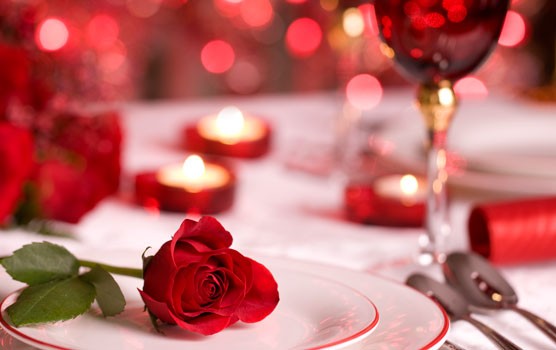Valentine’s Day is more than just a day for roses, chocolates, and romantic dinners. It’s a global phenomenon that transcends cultures, languages, and traditions. Whether you’re celebrating with a partner, friends, or even yourself, February 14th holds a special place in the hearts of millions.
But have you ever wondered how this day of love came to be? Or why it sparks both joy and controversy around the world? Let’s dive into the fascinating history, quirky traditions, and surprising facts about Valentine’s Day, and explore how it’s celebrated—and sometimes challenged—across the globe.
The History of Valentine’s Day: From Ancient Rituals to Modern Romance
Ancient Roots: Lupercalia and Fertility Festivals
Long before this day became synonymous with love, it was rooted in ancient Roman traditions. The festival of Lupercalia, celebrated from February 13 to 15, was a wild affair dedicated to fertility and the coming of spring. Men would sacrifice goats and dogs, then use the hides to whip women in the belief it would make them more fertile. Strange, right?
Reference: History.com – Lupercalia
The Legend of Saint Valentine
The romantic twist to Valentine’s Day comes from the story of Saint Valentine, a Roman priest who defied Emperor Claudius II. The emperor had banned marriages for young men, believing single soldiers fought better. But Valentine secretly performed marriages for young lovers. When his actions were discovered, he was executed on February 14, around 270 AD. Over time, he became a symbol of love and sacrifice.
Reference: Britannica – Saint Valentine
From Chaucer to Hallmark: The Evolution of this Love Day
The connection between Valentine’s Day and romance was popularized in the 14th century by Geoffrey Chaucer, who linked the day with love in his poem “Parliament of Foules.” By the 18th century, exchanging handmade cards and tokens of affection became common in England. Fast forward to the 19th century, and the rise of mass-produced cards turned the holiday into the commercial celebration we know today.
Reference: Smithsonian Magazine – The History of Valentine’s Day Cards

How Love is Celebrated Globally
United States: Roses, Chocolates, and Proposals
In the U.S., this Day is a billion-dollar industry. Americans spend an average of $27 billion annually on gifts like roses, chocolates, and jewelry. It’s also the most popular day for marriage proposals, with thousands of couples popping the question on February 14.
Reference: National Retail Federation – Valentine’s Day Spending
Japan: Chocolate Galore and White Day
In Japan, this special Day is all about chocolate. Women give “giri choco” (obligation chocolate) to male coworkers and “honmei choco” (true feeling chocolate) to their romantic interests. Men reciprocate a month later on White Day (March 14) with gifts like cookies, jewelry, or white chocolate.
Reference: CNN Travel – Valentine’s Day in Japan
Brazil: Dia dos Namorados
Brazil celebrates love on June 12, known as Dia dos Namorados (Lovers’ Day). The day is marked by music festivals, romantic dinners, and gift exchanges. It’s also a popular day for weddings and engagements.
Reference: BBC – Valentine’s Day Traditions

Myths and Facts About Valentine’s Day
Common Myths
- Myth: the day was invented by greeting card companies.
Fact: While commercialization has amplified the holiday, its origins date back to ancient Rome and medieval Europe. - Myth: It’s only for couples.
Fact: Many people celebrate with friends, family, or even themselves through self-love practices.
Fun Facts
- The first card was sent in 1415 by Charles, Duke of Orleans, to his wife while he was imprisoned in the Tower of London.
- Over 1 billion cards are exchanged worldwide each year.
- The heart shape’s association with love dates back to the Middle Ages, when it was believed to resemble the silphium plant seed, used as an ancient contraceptive.
Reference: National Geographic – Valentine’s Day Facts

Odd and Weird Traditions
South Korea: Black Day
In South Korea, singles who didn’t receive gifts on this Day or White Day mourn their single status on April 14, known as Black Day. They eat jajangmyeon (black bean noodles) and commiserate with fellow singles.
Reference: Insider – Weird Valentine’s Day Traditions
Finland: Friend’s Day
In Finland, this Day is more about friendship than romance. Known as Ystävänpäivä (Friend’s Day), people celebrate platonic love by exchanging cards and gifts with friends.
Reference: Time – Unusual Valentine’s Day Celebrations
Valentine’s Day in India: Love Meets Controversy
Growing Popularity in Urban Areas
In India, this Love day has gained traction, especially among the younger generation in cities. Restaurants offer special menus, malls are decorated with hearts, and couples exchange gifts and flowers.
Opposition from Extremist Groups
However, the celebration faces backlash from conservative and extremist groups who view it as a Western import that undermines Indian culture. Groups like Shiv Sena and Bajrang Dal have organized protests, vandalized card shops, and even attacked couples in public places.
- 2009: Members of Sri Ram Sene attacked a pub in Mangalore, claiming this love Day celebrations were against Indian values.
- 2018: Bajrang Dal activists threatened couples in Uttar Pradesh, calling the holiday “against Indian traditions.”
Reference: The Hindu – Valentine’s Day Controversies in India
Conclusion: Why Valentine’s Day Matters
The Love Day is more than just a commercial holiday—it’s a celebration of love in all its forms. From its ancient roots to modern-day traditions, it reminds us to cherish the people who matter most. While controversies and cultural clashes persist, the universal appeal of love ensures that this Love Day will continue to be celebrated around the world.
So, whether you’re spending the day with a partner, friends, or even yourself, take a moment to appreciate the love in your life. After all, love is what makes the world go round.
